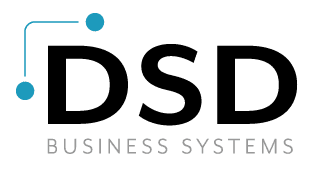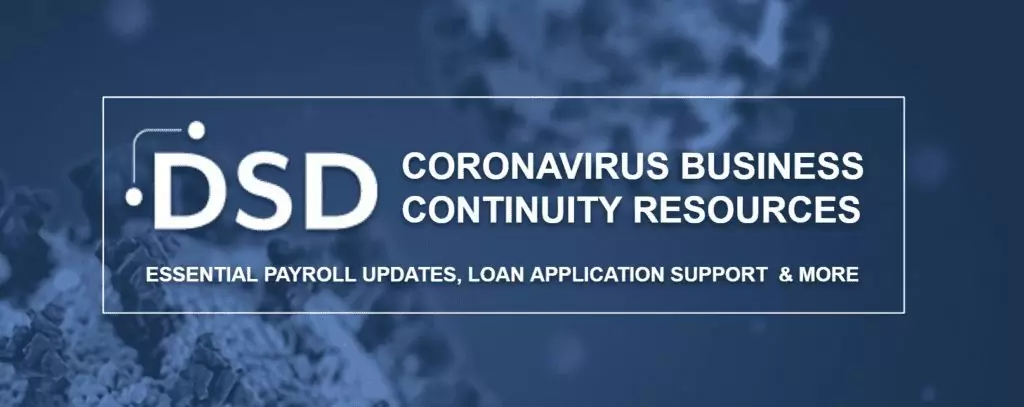Sage Payroll & HRMS: FFCRA FAQ + Product Updates
April 13, 2020
The response to COVID-19 has prompted swift economic and employment legislation resulting software updates.
We’re here to help!
We’ve created an online resource center to help update, educate and empower our business community about new legislation being proposed, the resultant changes and software updates necessary to comply.
Read on for CARES Act FAQ, Sage Payroll Updates and new Sage 100 Reporting Protocol:
FFCRA FREQUENTLY ASKED QUESTIONS
A: The Coronavirus Aid, Relief, and Economic Security (CARES) Act, signed into law on March 27, 2020, responds to the COVID-19 (coronavirus disease 2019) outbreak and its impact on the economy, public health, state and local governments, individuals, and businesses.
This stimulus bill includes tax provisions for businesses and individuals, provisions impacting employment and labor laws, provisions related to the small business administration, and provisions related to debtors.
A: Contact your accountant, tax professional or legal advisor for more information.
Visit the DSD Coronavirus Resource Page for links and more.
A: The CARES Act provides for $349 billion to be used to guarantee loans to small businesses and other entities that have 500 employees or less. The main purpose is to help organizations keep their employees on the payroll between now and the end of June 2020. Hence, the name of the program: Paycheck Protection Program (PPP).
This loan program will be administered by the Small Business Administration (SBA). Certain requirements associated with typical SBA loans, such as guarantees, collateral, and a “credit available elsewhere” underwriting, have been relaxed or eliminated. A borrower under a covered loan can have a portion of the principal of the loan forgiven in an amount equal to payroll costs, mortgage interest, rent, or utility costs during the eight-week period following the origination of the loan.
As part of the tax provisions for businesses, a refundable payroll tax credit for 50 percent of wages paid by employers to employees during the COVID-19 crisis is available to employers whose operations were fully or partially suspended, due to a COVID-19-related shutdown order, or whose gross receipts declined by more than 50 percent when compared to the same quarter in the prior year.
In addition to other benefits for businesses, employers and self-employed individuals can defer payment of the employer share of the Social Security tax they otherwise are responsible for paying to the federal government with respect to their employees.
A: A portion of the money allocated to loans, loan guarantees and investments is reserved for employers with between 500 and 10,000 employees, available IF the employers fulfill several employment obligations.
A: The CARES Act provides for $349 million to be used to guarantee loans to small business with less than 500 employees (including sole proprietorships, independent contractors and self-employed persons), private non-profit organization or 501(c)(19) veterans organizations affected by coronavirus/COVID-19. The main purpose is to help organizations keep their employees on the payroll between now and the end of June 2020. Hence, the name of the program: Paycheck Protection Program (PPP). This loan program will be administered by the Small Business Administration (SBA).
A: The CARES Act includes enhanced unemployment benefits to provide payment to those not traditionally eligible for unemployment benefits who are unable to work as a direct result of the coronavirus public health emergency.
The bill also extends the duration of traditional unemployment insurance by 13 weeks. The one-week waiting period is also suspended under CARES.
In addition to other benefits, the enhanced unemployment benefits pay 100 percent of employer’s costs of providing short-time compensation through Dec. 31, 2020, where employers reduce employee hours instead of laying off workers and the employees with reduced hours receive a pro-rated unemployment benefit.
A: While April 3, 2020 is the general start date for businesses with up to 500 employees to apply for a forgivable Paycheck Protection Program loan, independent contractors and self-employed individuals can apply for the forgivable loans starting April 10.
A: You can apply through any existing SBA 7(a) lender or through any federally insured depository institution, federally insured credit union, and Farm Credit System institution that is participating. Other regulated lenders will be available to make these loans once they are approved and enrolled in the program. You should consult with your local lender as to whether it is participating in the program.
More information is available here: Paycheck Protection Program
Sage SOFTWARE UPDATES
A: Yes. There are FFCRA-related updates for the following:
A: Yes! We can increase your chances of loan approval by assisting with supporting documentation and reports for many relief loan applications.
A: Yes! The Resource Center is filled with opportunities:
Reporting for FFCRA Loans
The Paycheck Protection Plan from the CARES Act authorizes up to $349 billion in forgiveable loans to small businesses to pay their employees during the COVID-19 crisis. All loan terms will be the same for everyone.
For additional information, including what qualifies the loan to be forgiven, please see the SBA’s Paycheck Protection Plan page.
NOTE: DSD is closely monitoring government reporting (e.g. 941). This information may change as more information becomes available. business.
The loan application process requires specific Payroll reports:
Use your Aatrix saved reports to provide these documents. They can be saved as a PDF or printed. If you are required to provide 2019 W2’s use your Aatrix Saved Reports to reprint or save the file to a PDF.
- Go to Federal State Tax Reporting and reprint W-2s for last year.
- Check History Report > Selection Criteria = By Check Date Range > Uncheck the Print Check Details checkbox > select Print Taxes checkbox. Gross Earnings will print on the report.
- Quartery Tax Report will print YTD Gross Wages
- Check History Report > Selection Criteria = By Check Date Range > Uncheck the Print Check Details checkbox > select Print Earnings checkbox. Earnings summarized by employee/earnings code will print on the report.
- Earnings Report, (can only do by quarter, which will include YTD) > Select the earnings for PTO, Vacation, and Family Medical Leave. Selection criteria = Equal To
For State and Local Taxes assessed on each Employee’s earnings use the Subject to by Date Range
- Check History Report > Selection Criteria = By Check Date Range > Uncheck the Print Check Details checkbox > Select Print Earnings and Deductions checkbox. Earnings and deductions summarized by employee/earnings code and employee/deduction code will print on the report.
- If fringes are employer contribution deductions, then the Deduction Report (can only do by quarter, which will include the YTD) > select the deduction codes > separated by commas, for those deductions > Selection criteria = Equal To.
- If fringes are earnings then print Earnings Report (can only do by quarter, which will include YTD) > select the earnings for Fringe earngins > Selection criteria – Equal to.
NOTE: For additional assistance customizing reports and/or creating documents please contact DSD Business Systems.









